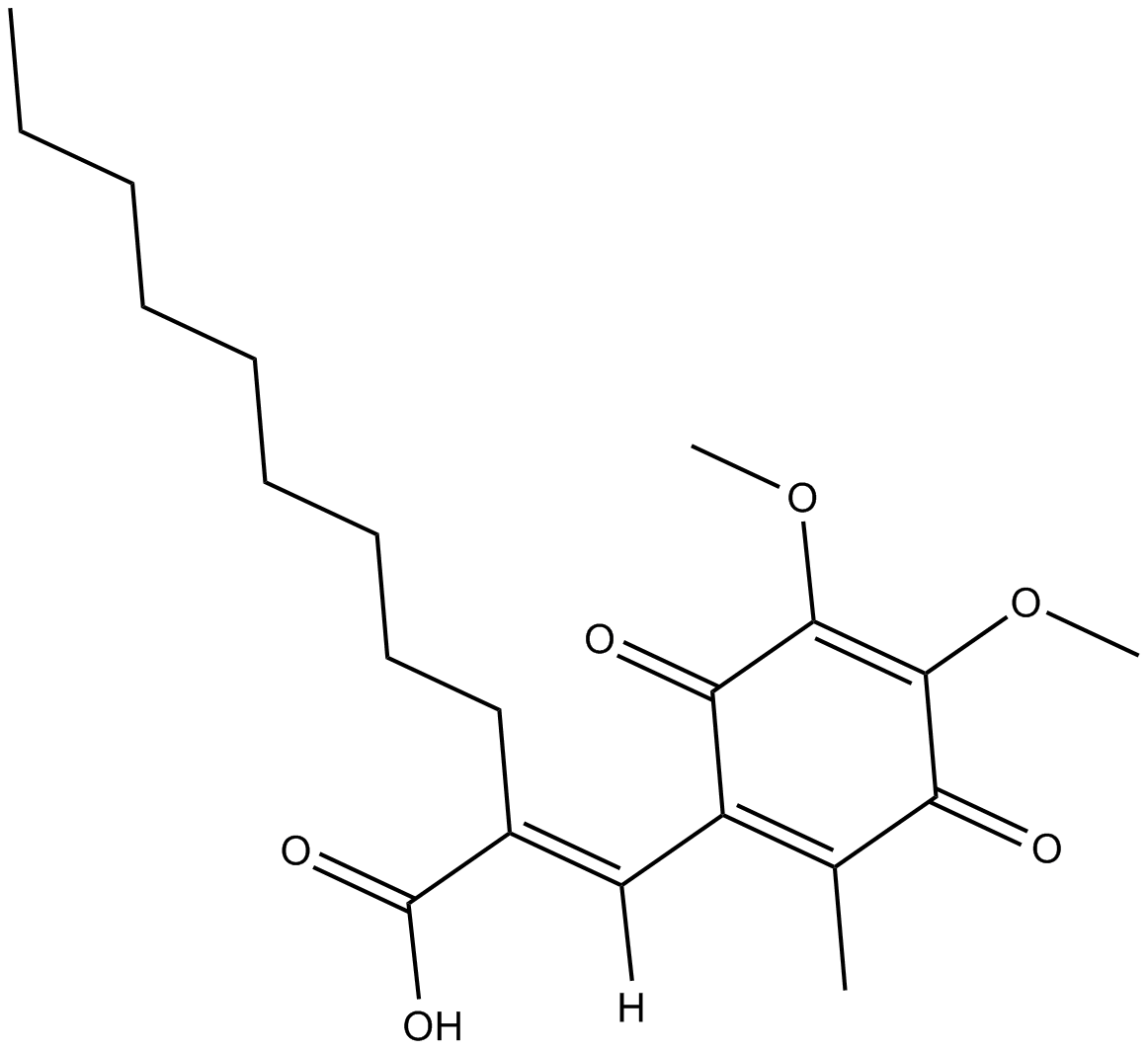E3330 (Synonyms: APX 3330) |
| رقم الكتالوجGC10620 |
E3330 (APX-3330) هو مثبط مباشر ، نشط وانتقائي عن طريق الفم من Ape-1 (نوكلياز أبورينيك / أبيرميدين 1) / Ref-1 (عامل الأكسدة والاختزال -1)
Products are for research use only. Not for human use. We do not sell to patients.

Cas No.: 136164-66-4
Sample solution is provided at 25 µL, 10mM.
E3330 is a small-molecule inhibitor of apurinic-apyrimidinic endonuclease/redox effector factor (APE1/Ref-1) redox domain function (IC50, 50 µmol/L) [1,2].
E3330(10-30 µM, 72h) inhibits not only the growth but also the migratory abilities of pancreatic cancer cells in vitro [1].The co-incubation of E3330(30 µM, 3 h ) and cisplatin (5-20 µM, 72 h) significantly decreased cell viability compared to cisplatin alone in the human NSCLC cell line H1975 [3]. E3330 treatment prevented the functional activation of NF-κB via the alteration of APE1 subcellular trafficking and reduced IL-6 and IL-8 expression induced by TNF-α [4]. E3330 clearly suppressed secretion of inflammatory cytokines including tumor necrosis factor-α (TNF-α), interleukin (IL-6) and IL-12 and inflammatory mediators nitric oxide (NO) as well as prostaglandin E2 (PGE2) from the LPS-stimulated RAW264.7 cells [5].
E3330 (10-100 mg/kg, oral) treatment 1 hr after galactosamine challenge attenuated the liver injury. E3330 was effective when administered p.o. 6 or 12 hr after galactosamine challenge in the galactosamine-induced hepatitis model in F344 rats [6]. The injection of TNF in combination with galactosamine resulted in severe liver injury. Oral pretreatment with 100 and 300 mg/kg of E3330 30 min prior to the injection of galactosamine/TNF significantly attenuated the increase in plasma L-alanine aminotransferase and L-aspartate aminotransferase activities [7]. The estimated half-life (t1/2) of E3330 was 3.7 hours in mice [2].
References:
[1]. Zou G M, Maitra A. Small-molecule inhibitor of the AP endonuclease 1/REF-1 E3330 inhibits pancreatic cancer cell growth and migration[J]. Molecular cancer therapeutics, 2008, 7(7): 2012-2021.
[2]. Fishel M L, Colvin E S, Luo M, et al. Inhibition of the redox function of APE1/Ref-1 in myeloid leukemia cell lines results in a hypersensitive response to retinoic acid-induced differentiation and apoptosis[J]. Experimental hematology, 2010, 38(12): 1178-1188.
[3]. Manguinhas R, Fernandes A S, Costa J G, et al. Impact of the APE1 redox function inhibitor E3330 in non-small cell lung cancer cells exposed to cisplatin: increased cytotoxicity and impairment of cell migration and invasion[J]. Antioxidants, 2020, 9(6): 550.
[4]. Cesaratto L, Codarin E, Vascotto C, et al. Specific inhibition of the redox activity of ape1/ref-1 by e3330 blocks tnf-α-induced activation of IL-8 production in liver cancer cell lines[J]. PLoS One, 2013, 8(8): e70909.
[5]. Jedinak A, Dudhgaonkar S, Kelley M R, et al. Apurinic/Apyrimidinic endonuclease 1 regulates inflammatory response in macrophages[J]. Anticancer research, 2011, 31(2): 379-385.
[6]. Nagakawa J, Hirota K, Hishinuma I, et al. Protective effect of E3330, a novel quinone derivative, in galactosamine-induced hepatitis in rats[J]. Journal of Pharmacology and Experimental Therapeutics, 1993, 264(1): 496-500.
[7]. Nagakawa J, Hishinuma I, Hirota K, et al. Protective effects of E3330, a novel quinone derivative, on galactosamine/tumor necrosis factor-α-induced hepatitis in mice[J]. European journal of pharmacology, 1992, 229(1): 63-67.
Average Rating: 5 (Based on Reviews and 16 reference(s) in Google Scholar.)
GLPBIO products are for RESEARCH USE ONLY. Please make sure your review or question is research based.
Required fields are marked with *




